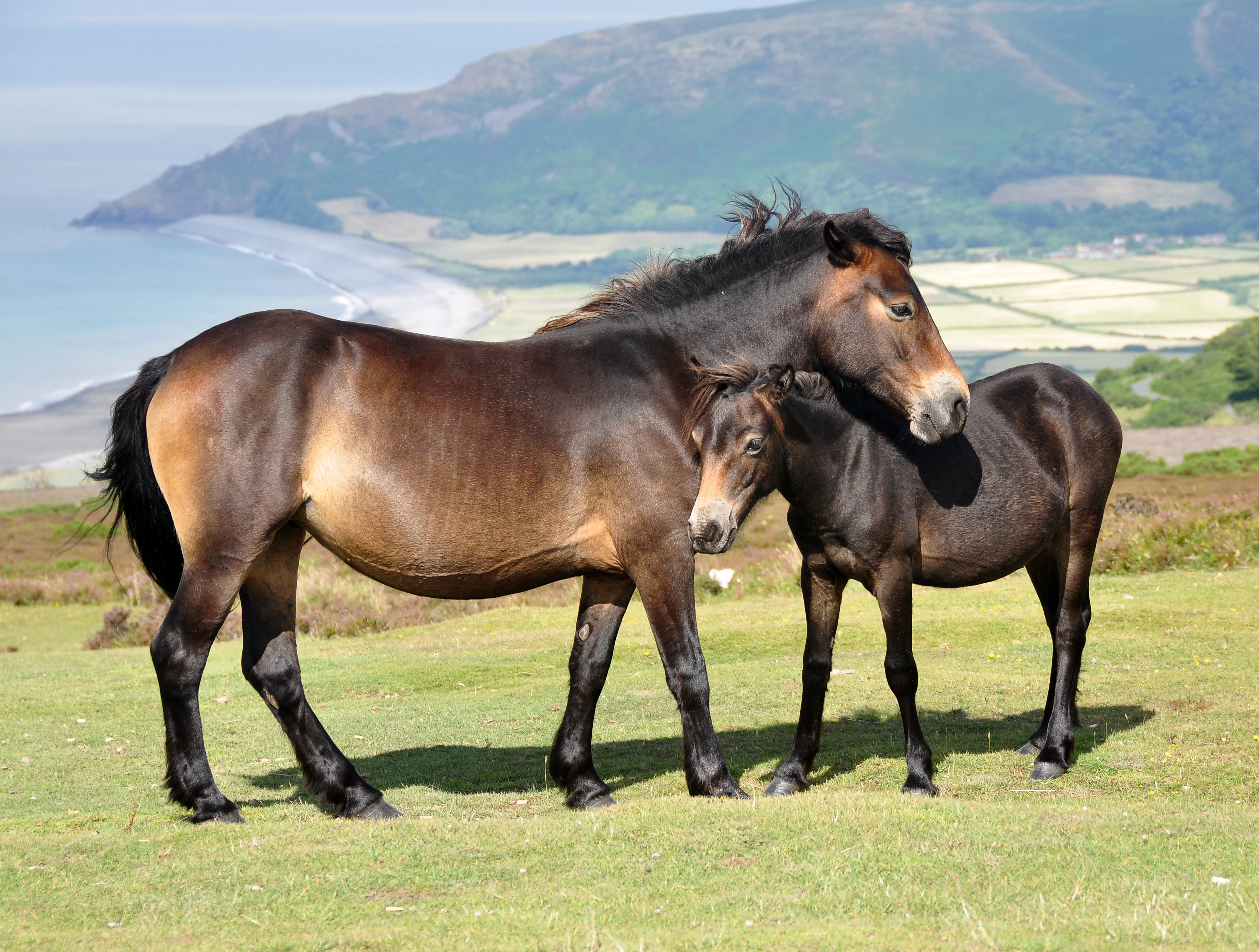Mary Etherington on:
[Wikipedia]
[Google]
[Amazon]
 Mary Etherington was an English horse breeder from
Mary Etherington was an English horse breeder from
 Mary Etherington was an English horse breeder from
Mary Etherington was an English horse breeder from Withypool
Withypool (formerly Widepolle, Widipol, Withypoole) is a small village in Somerset, England, near the centre of Exmoor National Park and close to the border with Devon. The word Withy means "willow". The civil parish, known as Withypool and Hawk ...
credited with reviving the Exmoor pony
The Exmoor pony is one of the mountain and moorland pony breeds native to the British Isles. Some still roam as semi-feral livestock on Exmoor, a large area of moorland in Devon and Somerset in southwest England. The Exmoor has been given "P ...
population after World War II
World War II or the Second World War, often abbreviated as WWII or WW2, was a world war that lasted from 1939 to 1945. It involved the vast majority of the world's countries—including all of the great powers—forming two opposin ...
. She and her husband, James Grant Speed (1906-1980) co-founded the Exmoor Pony Trekking Society at the Royal (Dick) School of Veterinary Studies now part of the University of Edinburgh
The University of Edinburgh ( sco, University o Edinburgh, gd, Oilthigh Dhùn Èideann; abbreviated as ''Edin.'' in post-nominals) is a public research university based in Edinburgh, Scotland. Granted a royal charter by King James VI in 15 ...
.
Etherington was responsible for the breeding of Herd 2 Exmoors after they were left to her by her mother. Originally Herd 2 was bred by Mr F.G. Heal. He then left the ponies to Etherington's mother, who was the wife of the rector at Withypool. In 1943 the ponies were split between her two daughters, Mary and Joy, with Mary taking Herd 2 and Joy taking Herd 3.
Immediately following World War II, the Exmoor pony population had dwindled to under fifty as hundreds of ponies had been shot by soldiers during the war and others had been stolen from fields and killed for food. Mary Etherington rallied breeders together to restore cattle grids and secure boundaries to the Commons in order to re-establish their herds, proclaiming in 1947, "The coming generations will have good reason to call us unfaithful stewards if when we are gone there are no little horses on the Exmoor hills." In 1948, she also exhibited two Exmoor ponies at the London Zoo
London Zoo, also known as ZSL London Zoo or London Zoological Gardens is the world's oldest scientific zoo. It was opened in London on 27 April 1828, and was originally intended to be used as a collection for science, scientific study. In 1831 o ...
in order to raise awareness of the threats they faced.
Etherington was consulted in government discussions on increasing the sheep and cattle population in Exmoor in 1949. That year, she left home and moved the herd around England searching for a permanent home for the ponies. She loaned a number of ponies to Maryon Wilson Park
Maryon Wilson Park is a public park on Thorntree Road, Charlton, in the Royal Borough of Greenwich in south east London.
Together with the neighbouring Maryon Park and Gilbert's Pit, it is a Local Nature Reserve, and forms part of the South Eas ...
in Greenwich in 1950 which initiated its development into an animal park.
In 1952, Etherington heard from a friend at the British Museum
The British Museum is a public museum dedicated to human history, art and culture located in the Bloomsbury area of London. Its permanent collection of eight million works is among the largest and most comprehensive in existence. It docum ...
about a research project on native pony breeds at the University of Edinburgh led by James Grant Speed, a Professor of Anatomy at the Royal (Dick) School of Veterinary Studies. Etherington took her herd of twenty ponies on the train to Edinburgh
Edinburgh ( ; gd, Dùn Èideann ) is the capital city of Scotland and one of its 32 Council areas of Scotland, council areas. Historically part of the county of Midlothian (interchangeably Edinburghshire before 1921), it is located in Lothian ...
and donated them to the veterinary school for conservation and research. She and Speed were married soon after.
The ponies were used to set up the Exmoor Pony Trekking Society after the success of pony trekking in Newtonmore. The club intended that by taking the public out for treks, the breed would be publicized as useful horses and pay for their own keep. Mary Stone ran treks each summer from the Snoot Youth Hostel in Hawick
Hawick ( ; sco, Haaick; gd, Hamhaig) is a town in the Scottish Borders council area and historic county of Roxburghshire in the east Southern Uplands of Scotland. It is south-west of Jedburgh and south-south-east of Selkirk. It is one of ...
. The treks continued from a number of locations around Edinburgh and now run from the Pentland Hills.
When Mary and her husband decided to sell the Herd 2 Exmoor ponies, the students who had been running the treks formed a syndicate and in 1962 bought a core group of mares. These were bred as herd two until the last foal in 2009.
Document collections
*References